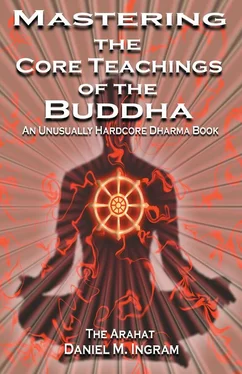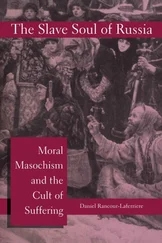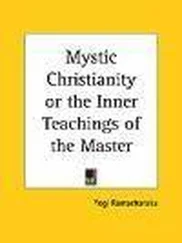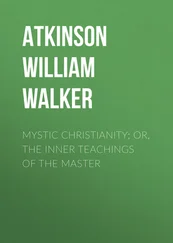Daniel Ingram - Mastering the Core Teachings of Buddha - An Unusually Hardcore Dharma Book
Здесь есть возможность читать онлайн «Daniel Ingram - Mastering the Core Teachings of Buddha - An Unusually Hardcore Dharma Book» весь текст электронной книги совершенно бесплатно (целиком полную версию без сокращений). В некоторых случаях можно слушать аудио, скачать через торрент в формате fb2 и присутствует краткое содержание. Год выпуска: 2009, ISBN: 2009, Издательство: Aeon Books, Жанр: Старинная литература, на русском языке. Описание произведения, (предисловие) а так же отзывы посетителей доступны на портале библиотеки ЛибКат.
- Название:Mastering the Core Teachings of Buddha - An Unusually Hardcore Dharma Book
- Автор:
- Издательство:Aeon Books
- Жанр:
- Год:2009
- ISBN:9781904658405
- Рейтинг книги:5 / 5. Голосов: 1
-
Избранное:Добавить в избранное
- Отзывы:
-
Ваша оценка:
- 100
- 1
- 2
- 3
- 4
- 5
Mastering the Core Teachings of Buddha - An Unusually Hardcore Dharma Book: краткое содержание, описание и аннотация
Предлагаем к чтению аннотацию, описание, краткое содержание или предисловие (зависит от того, что написал сам автор книги «Mastering the Core Teachings of Buddha - An Unusually Hardcore Dharma Book»). Если вы не нашли необходимую информацию о книге — напишите в комментариях, мы постараемся отыскать её.
Mastering the Core Teachings of Buddha - An Unusually Hardcore Dharma Book — читать онлайн бесплатно полную книгу (весь текст) целиком
Ниже представлен текст книги, разбитый по страницам. Система сохранения места последней прочитанной страницы, позволяет с удобством читать онлайн бесплатно книгу «Mastering the Core Teachings of Buddha - An Unusually Hardcore Dharma Book», без необходимости каждый раз заново искать на чём Вы остановились. Поставьте закладку, и сможете в любой момент перейти на страницу, на которой закончили чтение.
Интервал:
Закладка:
The Theravada clearly acknowledges that an arahat is a stage below buddhahood, and nouveau Tibetans seem particularly gleeful at this.
(To digress again for just a moment, there is an apocryphal and absurd story in circulation that when the teachings on emptiness were first given, a large number of arahats dropped dead of heart attacks. This tends to cause conceited laughter and smiles on the faces of nouveau Tibetan Buddhists, which is about as sick a reaction as I can imagine.
When will this sort of vile and absurd defamation of other valuable traditions end?) The arahat has attained to the complete and utter elimination of the illusions of permanence, satisfactoriness, and duality (separate self), and now perceives reality non-dualistically. They know the joy and clarity of freedom, as well as the fullness of their humanity.
Thus, the notion that an arahat is “self-realized” is an oxymoron perpetuated by regular morons.
So What’s “Full Enlightenment”?
Arahatship may correlate with the 6th bhumi or the 8th bhumi in the Tibetan model, depending on the sources of information. There are also reasons to associate it with the 10th bhumi, but I digress. Some Tibetan Buddhists will tell you that the four paths and the ten bhumis are two divergent tracks of awakening, but this is a load of equine excrement. Ditching the split is ditching the split, and the rest is gravy.
Enlightenment is exactly the same regardless of the tradition one followed to attain it. This is non-negotiable, and those who say otherwise are merely doing so for recruiting purposes or because they don’t know any better or both.
However, it is clearly stated by both traditions that arahats may not have completely integrated their understanding into their life and so may not have eliminated all “unskillful” residual habits, although defining “unskillful” here is as problematic as defining “appropriate.”
There are many stories in The Vi
naya and in modern times about
arahats behaving in strange ways, and this goes ten times for buddhas in the Mahayana and Vajrayana literature and today.
Regardless of how you define “unskillful,” eliminating all “unskillful”
residual habits is sometimes seen as such an undertaking that many schools of Buddhism hold it to be an absurd and impractical ideal.
However, there is some place for such high standards if they are supplemented with a very big dose of reality, patience and a sense of humor.
Buddhas are defined as having mastered all of the concentration states and psychic powers, whereas arahats may or may not have. (It should be noted that even unenlightened beings can master almost all of the psychic powers and all of the concentration states.) Buddhas are defined as having understood the teachings and the truth of things “to the very end,” whereas arahats have just fully understood these. The distinction here is lost on me.
Further, both sides also state clearly that there are bodhisattvas that may one day become buddhas. Again, to stick around requires being nothing but empty awareness or dharmakaya (in True Self terms), as this is all that is permanent but not a thing or localized in a specific place, etc. as before. This understanding is clearly present in arahats, bodhisattvas of the 8th bhumi and above, and buddhas. Thus, this 330
So What’s “Full Enlightenment”?
whole bodhisattva thing and all the talk of the Buddha manifesting as a bodhisattva is just a skillful True Self or dharmakaya teaching, as before, and not actually in conflict with the Theravada except to those who misunderstand what these teachings are really talking about.
It is this sort of confusion that starts all sorts of absurd and completely useless conversations about rebirth that take away time from real practice and useful inquiry. All talk of Buddha Nature is actually this same True Self teaching, as before. Balanced and strong understanding of both emptiness and compassion is vital for
understanding the Middle Way and for benefiting others, and this point is found in all the Buddhist traditions of which I am aware.
Remember how, in the beginning of Part II, I stated that the point of all of this is to become a master of the relative and the ultimate? When one becomes an arahat, which could from one point of view be considered becoming a master of the ultimate, then the relative world of phenomena is fully understood to also be the ultimate. This then naturally brings in the ideal of Buddhahood as the next logical standard to aspire to, as suddenly one cannot truly be a master of the ultimate without also being a master of the relative. Go become an arahat and see for yourself what conclusion you draw from your experience.
There is a story of a Thai arahat that took Bodhisattva Vows. In doing so, he pissed off lots of die-hard Theravada fans, and many began to think that he must not have actually been an arahat. Again, this is a fairly sick reaction to a beautiful and noble acknowledgement that we can always learn more about how to make a positive difference in this world.
Remember long ago when I mentioned that the first training was also the last training? We must continue to find skillful ways to live in the world after realizations, just like everyone else. On the other hand, the attainment of arahatship is the final understanding that the whole process is simply happening by itself, so whatever progress occurs towards buddhahood and living well in the world, however defined, is from that point on completely natural and inevitable. On reading the old texts, it becomes very clear that not only do arahats have lots left to learn about living in the ordinary world, but so did the Buddha. He was constantly learning more and more about teaching, dealing with people, 331
So What’s “Full Enlightenment”?
and running a big organization. In short, don’t imagine that you will ever be saved from having to learn how to live well in the world. It is an endless undertaking.
In the end, it must reluctantly be conceded that final and full enlightenment involves the death of a highly enlightened being, something called “paranirvana” or “nirvana without remainder.” I don’t mean to be needlessly morbid, but while there is still a body and a mind there is still suffering as our old friend Sid the Buddha defined it, and thus it is not until a highly enlightened being dies that the whole process is completed. This is not meant in any way to promote the suicide of highly enlightened beings, but simply to acknowledge the implications of being born and to be doctrinally correct.
However, this again falls prey to the interconnectedness vs.
complete transcendence debates just as the arahat vs. Buddha debates do, so from a certain point of view the question of what is full enlightenment cannot be answered without all beings getting enlightened and then dying. This is obviously unlikely to occur any time soon.
However, from another point of view all beings are already enlightened but have yet to realize it, and thus the debate is meaningless. Thus, you now have some understanding of why these ridiculous debates have been around for so long and why I obviously am not going to resolve them here. As with all logical systems that involve false assumptions of duality (which they all do), any argument taken far enough either goes in circles, contradicts itself or both. Put your time into clear practice and not into thinking about these things too much.
332
Mastering the Core Teachings of the Buddha
32.INTEGRATION*
A friend of mine read through an earlier version of this work and commented that there was very little in this book on integration, the process by which one’s life comes to be a natural reflection of one’s insights. I replied that I would write something about integration when I knew something about it, which he thought was funny, particularly knowing me. However, over the years I have learned a few things about the endlessly complex, mysterious and yet strangely ordinary topic of integration and about living in the world during and in the wake of insights. There are many sources, such as A Path With Heart and After the Ecstasy, the Laundry, both by Jack Kornfield, that do a much better treatement of the issue than what follows, but hopefully some of these simple points will be of use.
Читать дальшеИнтервал:
Закладка:
Похожие книги на «Mastering the Core Teachings of Buddha - An Unusually Hardcore Dharma Book»
Представляем Вашему вниманию похожие книги на «Mastering the Core Teachings of Buddha - An Unusually Hardcore Dharma Book» списком для выбора. Мы отобрали схожую по названию и смыслу литературу в надежде предоставить читателям больше вариантов отыскать новые, интересные, ещё непрочитанные произведения.
Обсуждение, отзывы о книге «Mastering the Core Teachings of Buddha - An Unusually Hardcore Dharma Book» и просто собственные мнения читателей. Оставьте ваши комментарии, напишите, что Вы думаете о произведении, его смысле или главных героях. Укажите что конкретно понравилось, а что нет, и почему Вы так считаете.












